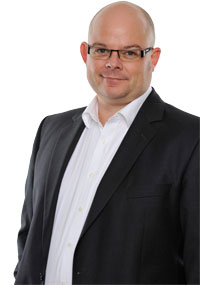Industrie 4.0 and the monitoring of things

Dirk Paessler, Paessler
At the World Economic Forum (WEF) in Davos earlier this year the theme was the Fourth Industrial Revolution, a theme that the founder of the WEF, Klaus Schwab, had a great deal of investment in, both as an engineer and as a German, writes Dirk Paessler, the chief executive of Paessler.
Industrie 4.0, as the branding has it, is an idea with its genesis in German industrial policy. Broadly speaking if the first industrial revolution involved the introduction of the steam engine, the second the production line and the third the computer, the fourth will involve the factories becoming almost entirely autonomous, with the Internet of Things central to their ability to run themselves.
As a German company, Paessler has been following the development of Industrie 4.0 with interest for several years. We don’t yet know if the hype is justified, but we can’t deny the possibilities are exciting. A factory made up of a series of modules that are interchangeable, operable anywhere in the world, drawing on data from anywhere with an internet connection, able to request repairs for themselves and even order 3D printing of new parts they may need is a development which changes much of how think about the nature of work.
Indeed, at Davos there was much concern about the sheer number of people whose jobs might be threatened by the massive amount of automation unleashed by this revolution. It is difficult to know with any certainty what the future holds in store, but our view is that as some jobs recede in importance, others come to the fore. Such has always been the case with technological developments.
Take network monitoring, our line of work. Currently many business leaders think of monitoring as a simple function of the IT department, a maintenance job on par with keeping the water and electricity going. But replace any of the current functions of a working building, from piston to piping, with a thinking machine and monitoring becomes the only way to see what is actually happening. The IoT might have the potential for a “learning” system, but many larger trends will always need the human eye to spot and correct.
In other words, change the nature of what monitoring does from just computers to anything with an IP address, and a whole new avenue of work opens up. We call this model the “monitoring of things”, the essential counterpart to IoT in the workplace. The workplace of the next decades is going to require a new form of central hub, a place where everything in a building can be seen, its data monitored and presented in an easy format. The monitoring interface is the modern equivalent of the foreman standing on his gangway, surveying the whole workplace.
Without vastly increased understanding of how networks function by the whole workforce, Industrie 4.0 cannot reach its potential. We don’t know how many workers will be required to operate a fully functional IoT-based factory, but the strong bet is that most will be watching network monitoring screens. Even a fully automated factory with no downtime requires constant surveillance – no system is so flawless as to escape the possibility for error entirely.
Of course, Industrie 4.0 is a far bigger shift than simply the integration of IoT into the modern workplace. We are also looking at the ability to virtually copy an entire factory and recreate it elsewhere, biotechnology and nanotechnology personalising all kinds of processes and artificial intelligence directing entire operations. However, IoT is the linchpin holding everything together, in the same way that the introduction of electric power enabled the coordination of other mass production techniques in the second industrial revolution.
It is that coordination that will require not just a technical change but a change in how workers think of the tech. Instead of thinking of devices in and of themselves, the workforce will have to see a web of things with a single Unified Monitoring system. If we can’t work out a way of properly seeing our new workplace, progress itself will remain out of sight – as will a new revolution.
